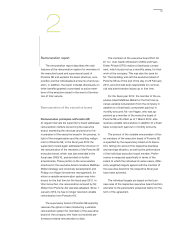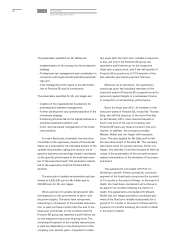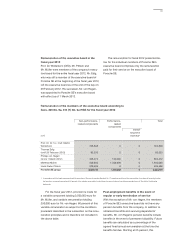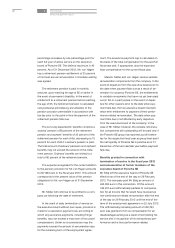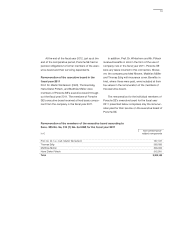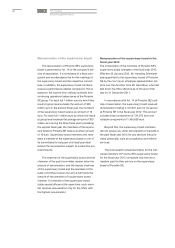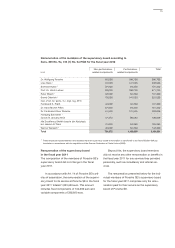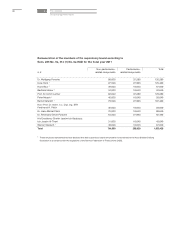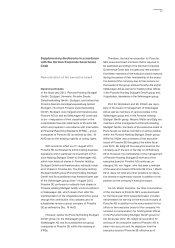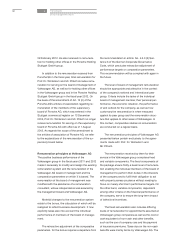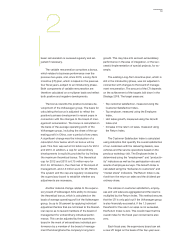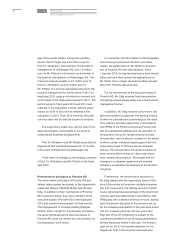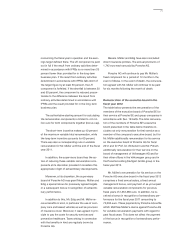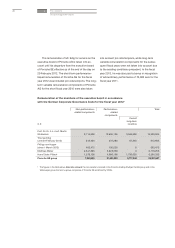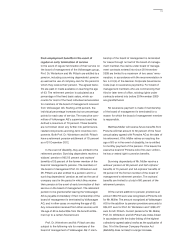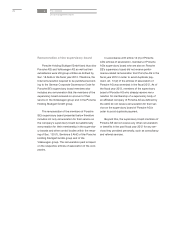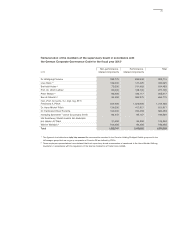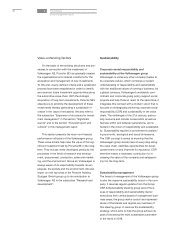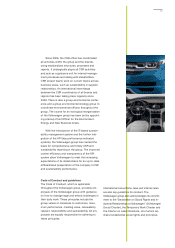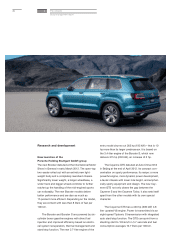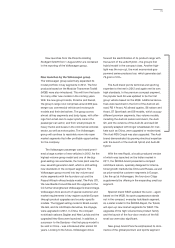Porsche 2012 Annual Report Download - page 73
Download and view the complete annual report
Please find page 73 of the 2012 Porsche annual report below. You can navigate through the pages in the report by either clicking on the pages listed below, or by using the keyword search tool below to find specific information within the annual report.
basic remuneration is reviewed regularly and ad-
justed if necessary.
The variable remuneration comprises a bonus,
which relates to business performance over the
previous two years, and, since 2010, a Long-Term
Incentive (LTI) plan, which is based on the previous
four fiscal years, subject to an introductory phase.
Both components of variable remuneration are
therefore calculated on a multiyear basis and reflect
both positive and negative developments.
The bonus rewards the positive business de-
velopment of the Volkswagen group. The basis for
calculating the bonus is adjusted to reflect the
positive business development in recent years in
connection with the changes to the board of man-
agement remuneration. The bonus is calculated on
the basis of the average operating profit of the
Volkswagen group, including the share of the op-
erating profit in China, over a period of two years.
A significant change was the introduction of a
calculation floor below which no bonus will be
paid. This floor was set at 5.0 billion euro for 2012
and 2013. In addition, a cap for extraordinary
developments is explicitly provided for by limiting
the maximum theoretical bonus. The theoretical
cap for 2012 and 2013 is 6.75 million euro for
Prof. Dr. Winterkorn, the chairman of the board of
management, and 2.5 million euro for Mr. Pötsch.
The system and the cap are regularly reviewed by
the supervisory board to establish whether any
adjustments are necessary.
Another material change relates to the supervi-
sory board of Volkswagen AG’s ability to increase
the theoretical bonus, which is calculated on the
basis of average operating profit of the Volkswagen
group, by up to 50 percent by applying individual
adjustment factors that are not linked to the theoret-
ical cap so as to reward members of the board of
management for extraordinary individual perfor-
mance. This can be adjusted by the supervisory
board in the event of extraordinary individual per-
formance by a member of the board of manage-
ment that strengthens the company’s long-term
growth. This may take into account extraordinary
performance in the area of integration, or the suc-
cessful implementation of special projects, for ex-
ample.
The existing Long-Term Incentive plan, which is
still in the introductory phase, was not adjusted in
connection with changes to the board of manage-
ment remuneration. The amount of the LTI depends
on the achievement of the targets laid down in the
Strategy 2018. The target areas are:
· Top customer satisfaction, measured using the
Customer Satisfaction Index,
· Top employer, measured using the Employee
Index,
· Unit sales growth, measured using the Growth
Index and
· Increase in the return on sales, measured using
the Return Index.
The Customer Satisfaction Index is calculated
using indicators that quantify the overall satisfaction
of our customers with the delivering dealers, new
vehicles and the service operations based on the
previous workshop visit. The Employee Index is
determined using the “employment” and “productiv-
ity” indicators as well as the participation rate and
results of employee surveys. The Growth Index is
calculated using the “deliveries to customers” and
“market share” indicators. The Return Index is de-
rived from the return on sales and the dividend per
ordinary share.
The indices on customer satisfaction, employ-
ees and unit sales are aggregated and the result is
multiplied by the Return Index. This method ensures
that the LTI is only paid out if the Volkswagen group
is also financially successful. If the 1.5 percent
threshold for the return on sales is not exceeded,
the Return Index is zero. This would mean that the
overall index for the fiscal year concerned is also
zero.
Each fiscal year, the supervisory board can set
a new LTI target on the basis of the four-year aver-
69


